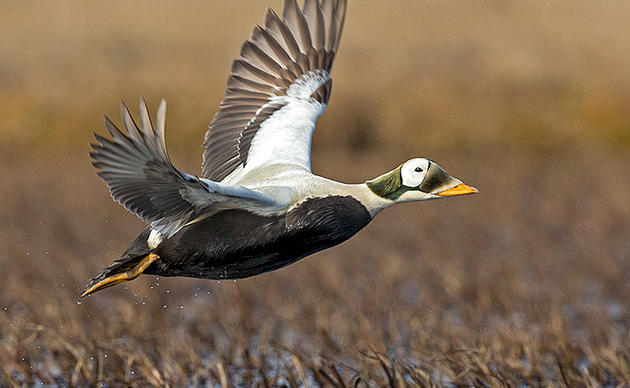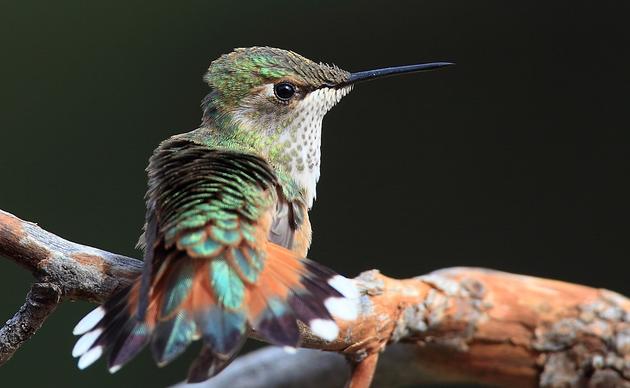It was a Saturday afternoon over beers in the ‘90s when Robert “Bob” Elner, a scientist emeritus with Environment and Climate Change Canada, had his "aha” moment. Staring into a scanning electron microscope with a colleague in France, Elner spotted something unexpected on the tongue of a Western Sandpiper: diatoms, or microscopic plants that produce biofilm.
“And suddenly both of us looked at each other, and realized that, my God, they could be eating diatoms,” Elner says.
This moment sparked a scientific breakthrough, followed by an international documentary project called Sandpipers’ Last Supper overseen by filmmaker Isabelle Groc, and the revisiting of a dangerous development project set for Roberts Bank—a vital shorebird stopover site for Western Sandpipers and other shorebirds on their way to Alaska.
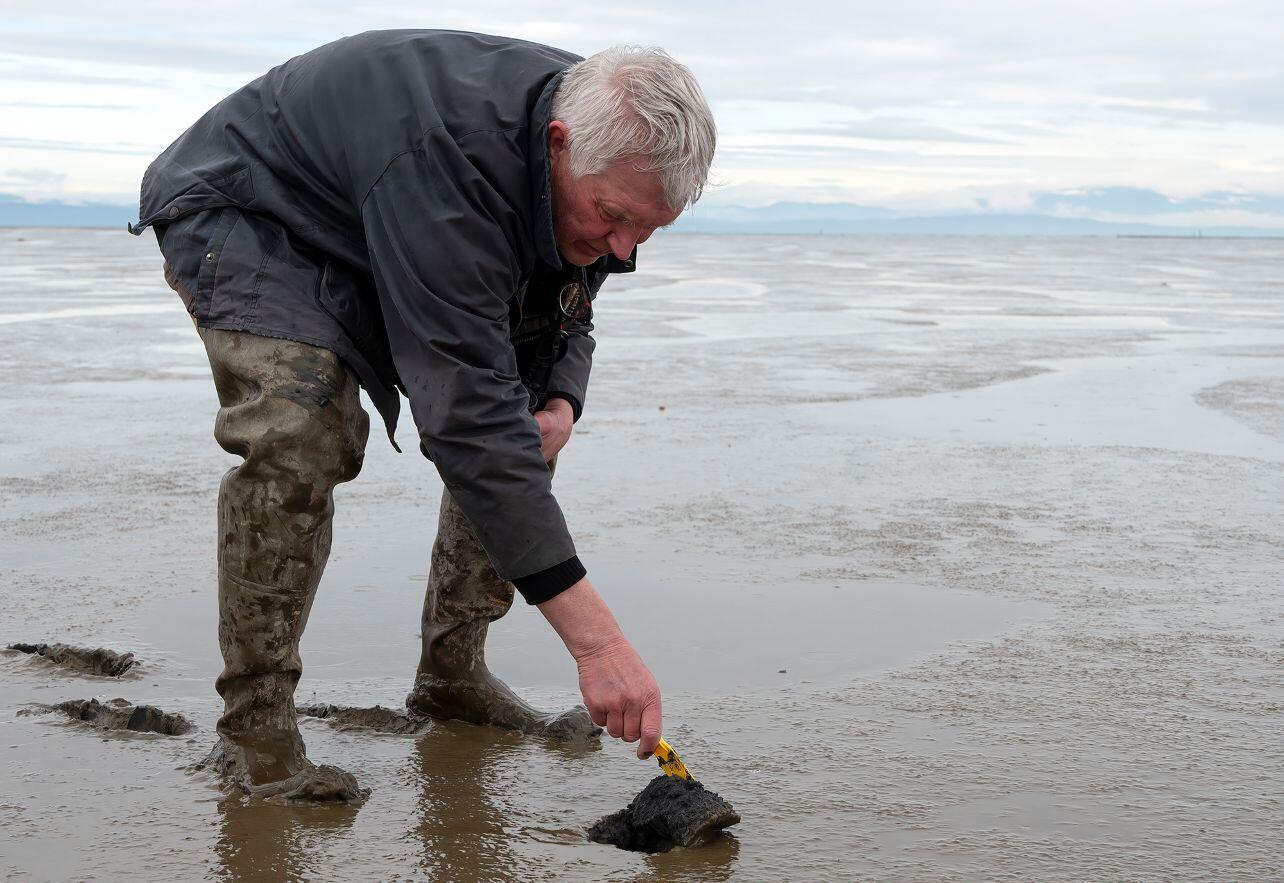
The Discovery
Every spring, Western Sandpipers migrate from the Americas, sometimes as far south as Peru, to breeding grounds in Alaska. They stop at a few key places along the Pacific Flyway to refuel, including Roberts Bank in British Columbia near Vancouver (which is where Elner happens to reside).
That image of a bristly Western Sandpiper tongue cracked open one of the most important shorebird discoveries of the past 50 years. For decades, ornithologists believed migrating sandpipers dined on tiny invertebrates like worms and crustaceans. Elner, who grew up seaside in England, pursued a PhD in crab feeding behavior. Therefore, with no formal training in ornithology, he saw things differently.
“If I'd been trained as an ornithologist, I probably wouldn't have even noticed that there was this phenomenon of biofilm feeding happening, because I would have accepted the literature that birds were feeding on small invertebrates, and wouldn't have even stopped to re-examine that,” he says. “So that switch in fields was a handicap in some ways … but at the same time, it enabled me to look at something which was an accepted fact in a much more skeptical way.”
At Roberts Bank, Elner noticed Western Sandpipers in massive numbers, pecking at mud, which he says “was quite perplexing, because I didn't really see what the heck was there.”
His curiosity piqued, he examined the stomachs of a few dead sandpipers in the mid-’90s, but all he found was sand and liquid. Something wasn’t adding up. That interest launched a deeper investigation that revealed these birds weren’t just nosing around—they were feeding on biofilm, a rich source of omega-3 fatty acids that powers their migration from South America to Alaska.
This thin, intertidal slime is created by microscopic plants called diatoms. Normally, diatoms in biofilm grow like normal plants, but a "shock" triggered by sudden salinity changes can stop them from growing and turn them into omega-3 fatty acid factories.
“It's like the Princess and the Frog type thing: you've got to get that mud to be activated,” Elner says. “And it's activated at precisely the time the Western Sandpipers are moving through.”
There’s more. This “ecological nuclear reactor” supports not only migrating birds but entire coastal food webs, including salmon, crabs, and orcas. This means the biofilm also reframed the ecological value of mudflats—not only for shorebirds, but for salmon, crab, and killer whales, too.
And here’s where things get personal, meaning for us humans. As these nutrients accumulate through the food web, they end up in the seafood we eat. Omega-3s are critical for human health, particularly brain development. Elner is quick to point out that fossil records demonstrate how early humans who migrated to the coast and began eating shellfish—rich in omega-3s—experienced increased brain size and cognitive ability.
Over the years, Elner has been working with colleagues in Canada and the U.S. as well as Japanese and French scientists, and biofilm has already resulted in over two dozen scientific papers. “It's getting into the scientific literature, which is really fundamental for the credibility of this science that is peer reviewed,” Elner says.
It’s also good as one issue threatens the biofilm in his own backyard.
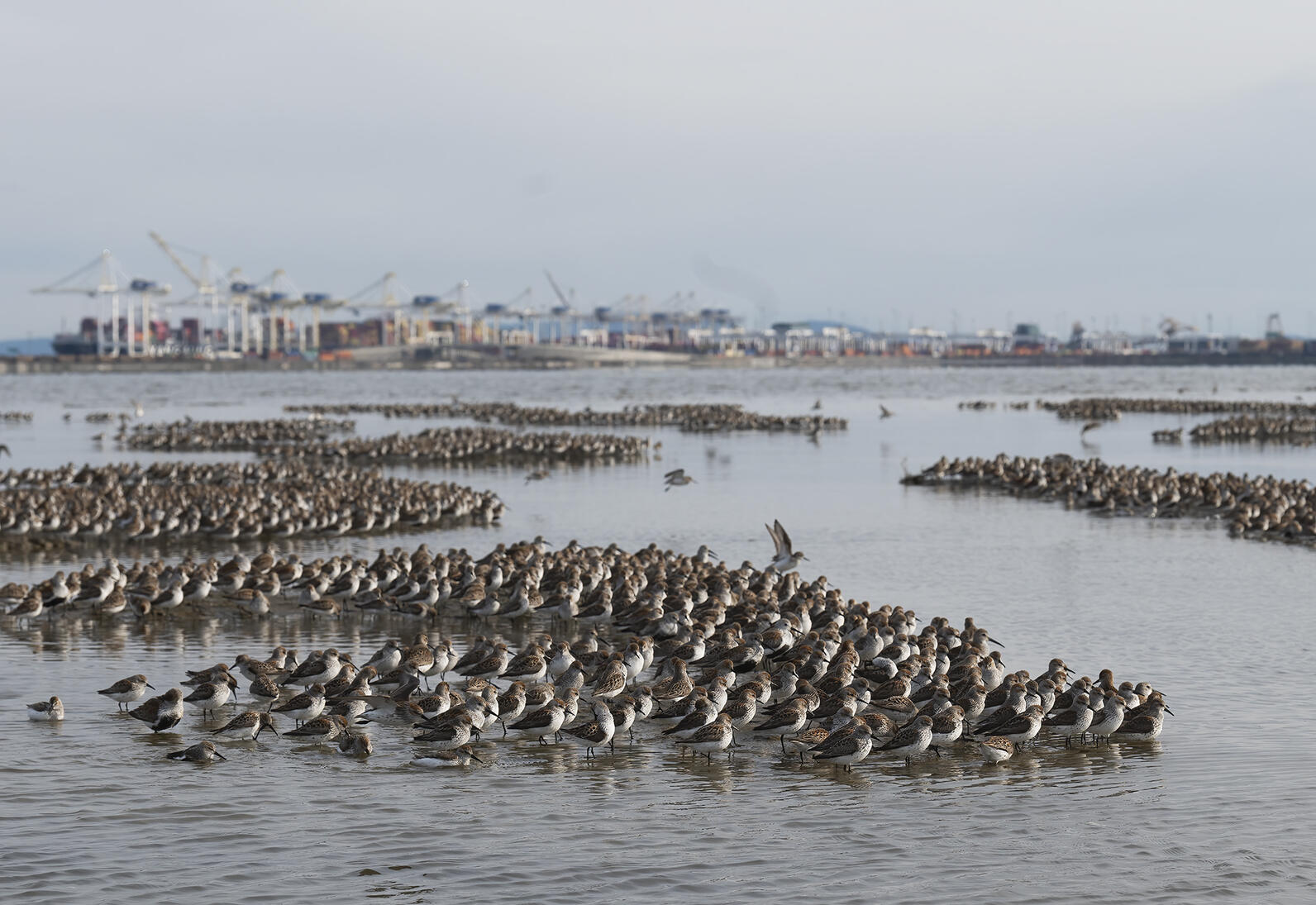
The Battle for Roberts Bank
Roberts Bank, set on the Fraser River Estuary in British Columbia, is a crucial stopover site for shorebirds, especially Western Sandpipers. Between 42 and 64% of the entire Western Sandpiper species relies on Roberts Bank to rest and refuel. It’s thought that almost every Western Sandpiper will use the site at least once in their lifespan.
This spot, which is one of just a handful of places along the Pacific Flyway for shorebirds to refuel, is also globally classified as an Important Bird Area. And—as you probably saw coming—it is severely under threat.
Roberts Bank, a major biodiversity hotspot in Canada and one of the richest biofilm sites in North America, is also in the path of expanding industrial development. In 2023, a proposal by the Vancouver Fraser Port Authority to build a second container ship terminal at Roberts Bank was approved. This would expand existing connections to the Deltaport and Westshore terminals, and require a deeper tugboat terminal. Construction of Roberts Banks Terminal 2 (RBT2) would fill 177 hectares—or more than 430 acres—of intertidal mudflats at Roberts Bank. But, according to Canadian Geographic, “Environment and Climate Change Canada has predicted the expansion will indirectly affect up to 558 hectares of mudflats,” or nearly 1,400 acres.
"The Western Sandpiper is an Audubon priority species that relies on the invertebrate prey and nutrient-rich biofilm found on the Fraser River Estuary’s extensive mudflats to complete their annual migrations to Alaska," says River Gates, Audubon’s Pacific Shorebird Conservation Initiative Coordinator. "Once one of the most abundant shorebirds on the Pacific coast, Western Sandpipers have shown a 54% decline from 1989 and 2019 at the Fraser River Estuary and other important stopover sites. To reverse this trend, collaborative conservation efforts to restore and conserve critical habitat at stopover sites across the flyway are necessary."
But despite the disappointing approval in 2023, it’s not too late to stop the development.
Elner says biofilm research since the early ‘90s coincided almost exactly with the port development in the Fraser River Estuary in “an amazing coincidence.” As biofilm’s story unfolded, so did the plans for port development, which were slightly ahead of the science.
“If it happened 10 years before … it would have been built by now. But the serendipity was, it happened as we were doing this research on biofilm, and so the question was, could this development impact the biofilm and have negative consequences for Western Sandpiper?” Elner says. “And we really didn't know, but we suspected it could. Of course, the port really wasn't happy about that.”
Due to this emerging science, Elner and the government scientist team were able to inject considerations about biofilm into an environmental assessment for the first time—ever.
Despite this, the Canadian federal government approved the project, but it’s subject to 370 binding conditions (including over 100 measures), to protect the environment, local wildlife, and land-use activities of Coast Salish First Nations and other Indigenous Peoples. However, one condition, found under Article #10.4, is something Elner considers “amazing.” It’s basically the biofilm condition.
“Essentially, 10.4 says the port has to do studies over the next several years to determine if the port, as it's being built, will create … significant negative effects on biofilm and sandpipers,” he says.
If there are significant negative effects on biofilm and sandpipers, the port must mitigate (which is unlikely), redesign, or deconstruct it. In the end, an independent, international scientific committee—not the port—will make the final call. That process could take roughly five years. At this time, the whole $3.5 billion project is in a hiatus.
“We're in a very interesting, scientific, political sort of stalemate at the moment,” Elner says.
For now, Elner stresses that public awareness is an essential next step. It’s “critical that the port’s feet to the fire, the federal government's feet to the fire, are kept there,” or it may be possible for the issue to be gradually forgotten, and “the port building goes on.”
But how to share this story and the significance of Roberts Bank and stopover sites like it with a greater audience? That’s where Isabelle Groc and her film come in.
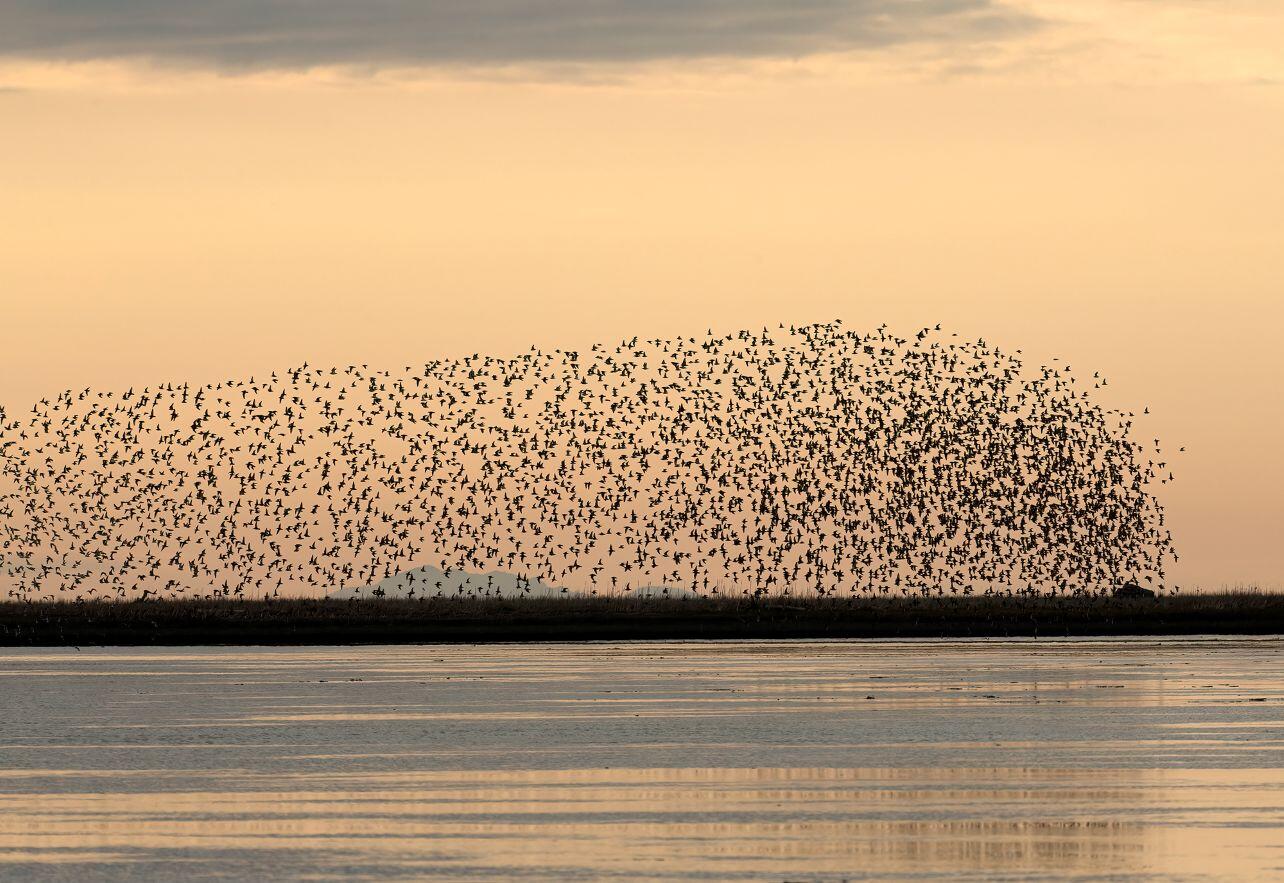
The Biofilm Film and Alaska’s Shorebird Strongholds
Isabelle Groc is an award-winning writer, conservation photographer, and documentary filmmaker who focuses on wildlife conservation, environmental science, marine ecosystems, and the relationships between people and the natural world. She’s also a fellow of the Explorers Club and the Royal Canadian Geographical Society.
Groc grew up in France but relocated to Vancouver over 20 years ago. Each year, she witnesses the spring migration of Western Sandpipers to the Fraser River Estuary.
“I've been photographing that spring migration at Roberts Bank for 16 years, so a long time,” Groc says. “And I have never missed this rendezvous with the birds just because it's something absolutely magical to be on this landscape, on the mud amongst the birds.”
Since 2023, Groc has been making the documentary Sandpipers’ Last Supper to raise awareness about RBT2 and the ecological value of intertidal mudflats. But she and her film crew also followed the Western Sandpipers north to Alaska in May and June 2024. Groc says she wanted to film birds pumped up on omega-3 fatty acids from the Fraser River on their breeding grounds in Alaska’s Arctic and subarctic regions to impress upon viewers that migratory sites are part of an interconnected system.
“For us, it was quite enchanting to finally meet up with our birds, potentially,” Groc says, “And see them reproducing and seeing the chicks, and knowing that those chicks will go back through the same routes and would, in turn, also visit Roberts Bank.”
Groc and crew traveled to Utqiaġvik to visit with Rick Lanctot, Shorebird Coordinator for the U.S. Fish and Wildlife Service–Alaska Region. But they spent most of their time in Nome to capture the first moments of Western Sandpipers arriving after spring migration, with ice still visible on the landscape. During that trip, they were joined by Kate Persons, a retired Alaska Department of Fish and Game wildlife biologist and coordinator of Nome’s Christmas Bird Count. The crew then returned to film the shorebirds nesting and bopping around the now vegetated and flower-speckled tundra. The second trip, they were accompanied by Jim Johnson, wildlife biologist and the Alaska Landbird Coordinator, also with the U.S. Fish and Wildlife Service.
Groc spent time filming in the Safety Sound Important Bird Area and heard “about potential developments to a place like Safety Sound,” she says. “So you see, it's all again connected, and those threats are pervasive and reverberate throughout the different sites those shorebirds use.”
Groc says she and her crew didn’t get to spend enough time in Alaska, citing the realities of working with a limited budget. Nor did they get much sleep, but they did get plenty of essential footage.
“I loved Alaska,” Groc says. “We were so grateful for the time and, most of all, the collaborations we had with scientists on the ground.”
Groc and crew are still working on the documentary, which is supported by scientists and organizations like BC Nature, Birds Canada, and Audubon Alaska. A 25-minute short documentary is available now, and a full-length version is underway—but it won’t be just about Western Sandpipers and this particular leg of their migration.
“It is a complex story that has ramifications for all shorebirds, all estuaries, and people,” Groc says.
Elner agrees.
“This is not just Roberts Bank. This is shorebirds all over the world, and so it's a very important story that goes way beyond Western Sandpipers,” he says. “It's a fundamental re-paradigm shift in how we look at shorebird conservation, but not only that, how we look at the conservation of temperate estuaries.”
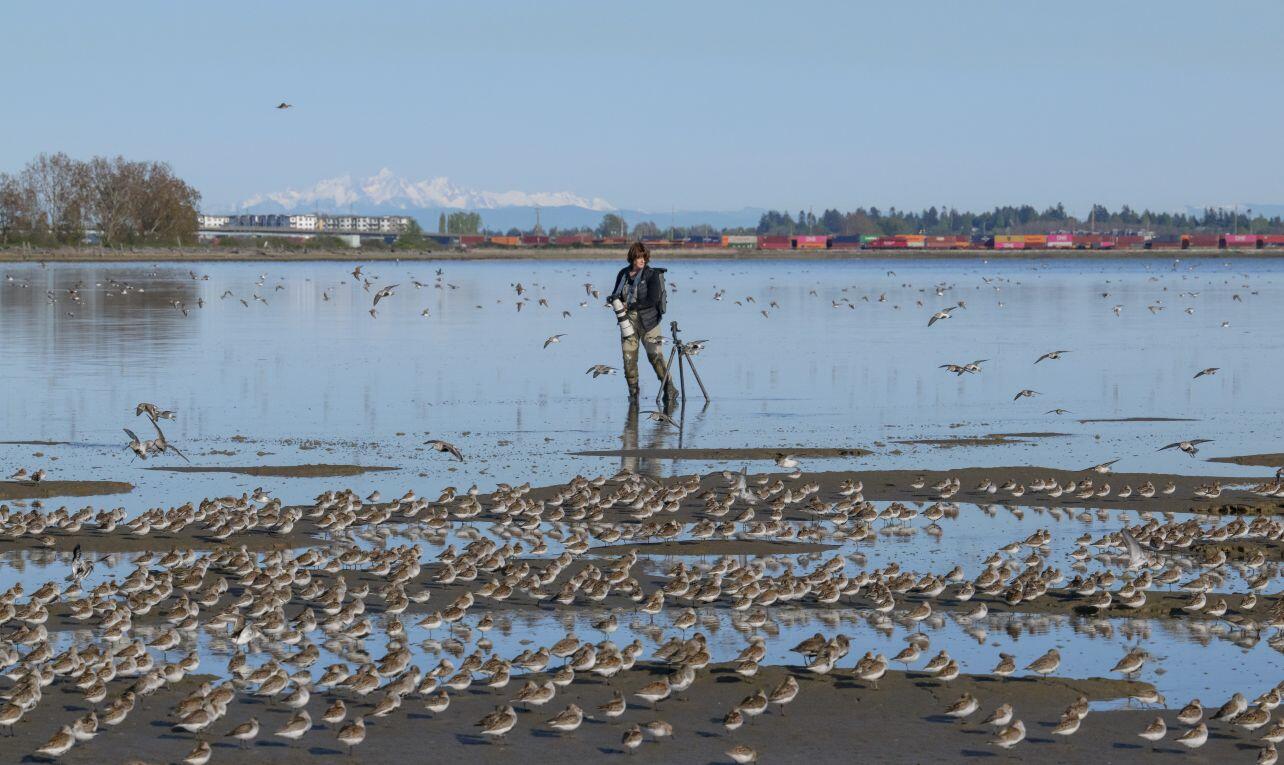
Want to Help?
Shorebirds are not easy to film, documentaries are expensive to make, and mud is hard to sell, so Sandpipers’ Last Supper could use some support from shorebird lovers. Here’s how:
- Watch and share the short version of the film to help build public awareness
- Consider donating to support the film and the companion action campaign to halt the destruction of critical shorebird habitat
- Learn more about Roberts Bank and sign up to stay up to date on the film and the campaign



